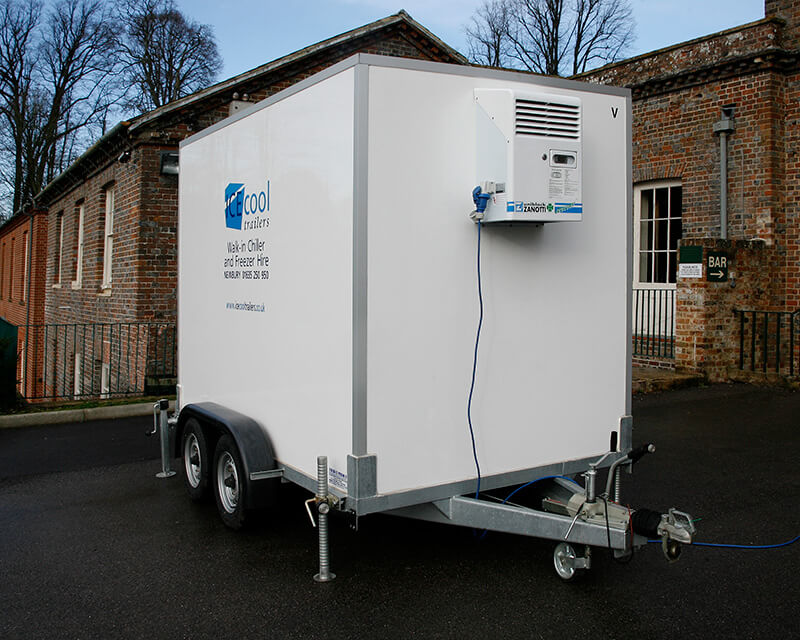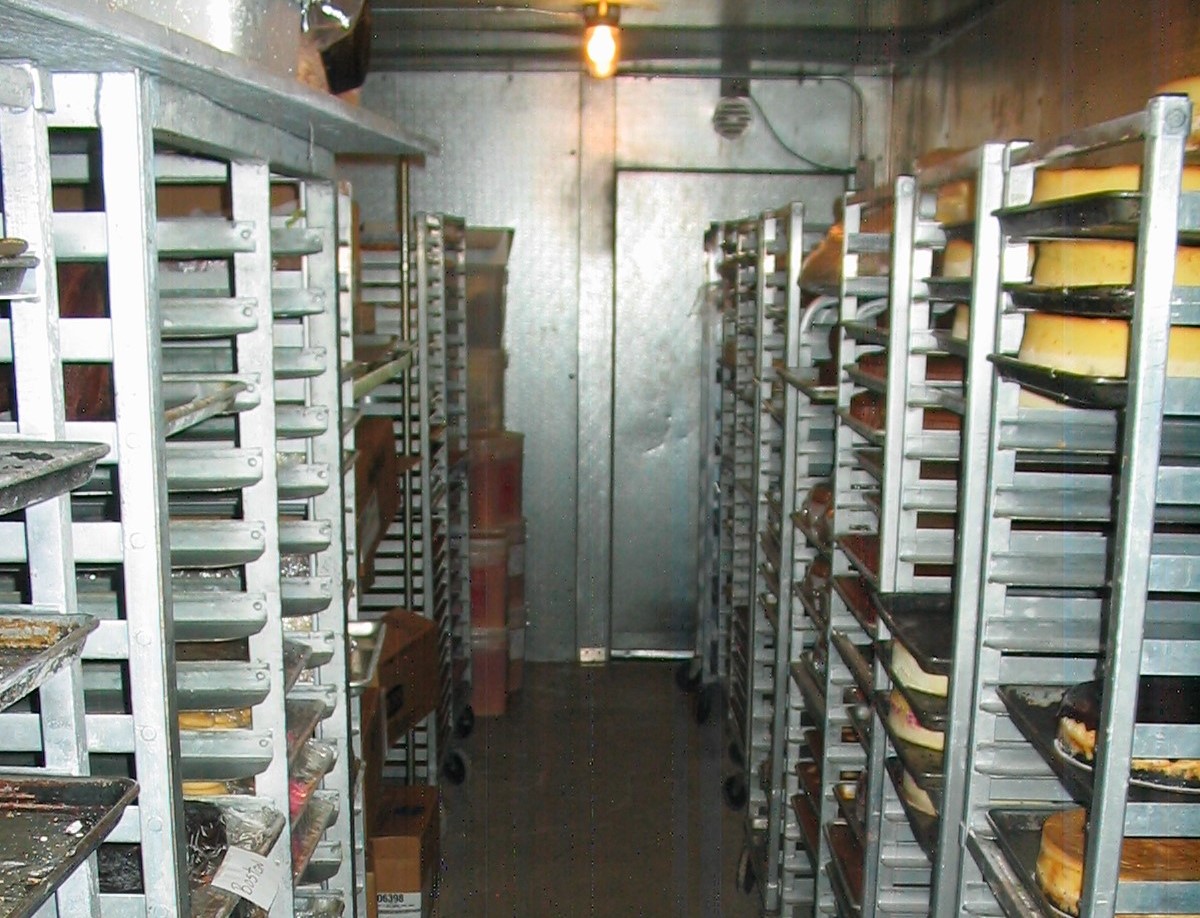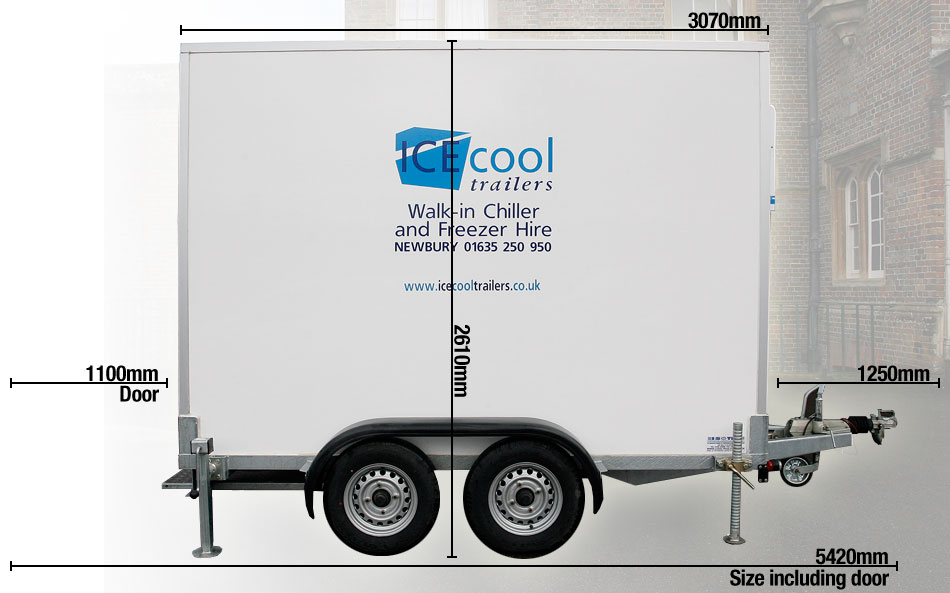How Are Refrigerated Trailers Powered?
Are you catering for a festival, outdoor event or sporting occasion? If so, the chances are you will need some on site refrigeration in order to keep the tills ringing all day. Our refrigeration trailers are an ideal solution for pop-ups, festival caterers and event refreshment providers. They can be driven and positioned exactly where you want them, either just outside an on site kitchen or in the middle of a field. But how do you run a refrigeration trailer in the middle of a field, with no source of power?
What is a Refrigerated Trailer?
A refrigerated trailer, often referred to as a reefer trailer, is a type of mobile refrigeration unit designed to transport perishable goods at specific temperatures. These trailers are equipped with built-in cooling systems that maintain a constant temperature, ensuring the safety and quality of food products, pharmaceuticals, and other temperature-sensitive items during transit. Refrigerated trailers are crucial in the cold chain logistics, providing a versatile solution for keeping goods at the required temperatures from the point of origin to the destination. They are widely used across multiple industries, including food services, catering, pharmaceuticals, and agriculture.
Do I Need Power for a Refrigerated Trailer?
If you are thinking of positioning your fridge trailer further than 20 m away from a source of mains power, you will have to use a generator to power the unit. This low-cost option gives you complete flexibility about where and when you prepare food and serve customers. Generators are readily available from fridge trailer hire shops, and are easy to use.
What Generator Do I Need for a Refrigerated Trailer?
We recommend that you hire a barrow-mounted generator, which is easy to move and position, such as this one, which is available from HSS. Any hire company will have something similar:
http://www.hss.com/g/41310/10kVA-Silenced-Diesel-Generator.html
Our trailers need at least 3Kw of power to run, so a small generator will not be enough to deliver this level of power constantly. You must hire a generator that produces more power than is required to have enough capacity to run all day at a constant power level. We therefore suggest a 7.2Kw generator. This should use around 0.60 gallons of diesel per hour, although it is best to err on the side of caution when using manufacturers’ quotes on fuel consumption. You can calculate your fuel costs based on how long you will be on site. Using a generator to power a fridge trailer is a convenient and cost efficient way of keeping your catering operation operational all day, thus maximising your profits.
Understanding the Basics of Using a Generator for a Refrigerated Trailer

When operating a refrigerated trailer with a generator, particularly for those who are new to using generators, understanding the basics can make a significant difference in performance and safety. Here are some expert tips organised into a step-by-step guide to help you manage this essential equipment effectively.
Read the Manufacturer's Instructions
Before you begin, it’s crucial to familiarise yourself with the generator by reading the manufacturer's instructions carefully. This step ensures that you understand the specific requirements and operational guidelines, which can vary from one model to another.
Check Fuel and Oil Levels
Start by checking the fuel gauge to ensure you have enough fuel to last through the day. Running out of fuel can cause unnecessary interruptions and could potentially harm the generator. Next, verify the oil level, which is generally maintained by the hire company. However, a quick check before starting the generator can prevent any operational issues due to low oil levels.
Prepare the Generator for Operation
Ensure that the circuit breaker is flipped to the OFF position before you start the generator. This safety step is crucial to protect the generator and the connected equipment. Turn on the fuel valve to allow fuel to flow into the generator's engine.
Start and Warm Up the Generator
Use the start switch or key to ignite the generator. Allow the generator to run for a few minutes to warm up. This warm-up period helps the engine reach a stable operating temperature, which is critical for efficient performance.
Engage the Circuit Breaker and Connect the Trailer
Once the generator is warmed up, flip the circuit breaker switch to the ON position. Now, you can safely plug in your refrigerated trailer using the supplied power cable. This connection will start the refrigeration process in your trailer.
Shutting Down the Generator
If you need to turn off the generator for any reason, remember to first flip the circuit breaker to the OFF position. This action ensures all power is cut off before the generator is shut down, protecting both the generator and the refrigerated trailer.
Refuelling and Cooling Down
After shutting down, let the generator cool down before refuelling. This cooling period is important for safety, preventing any accidental ignition of fuel. The refrigerated trailer will maintain its cool temperature during this period, so there’s no need to worry about spoilage or temperature fluctuations.
By following these detailed steps, you can effectively manage the use of a generator for your refrigerated trailer, ensuring both safety and efficiency in maintaining the necessary temperature controls for your perishable goods.
The Bottom Line
And there you have it! Your generator will run happily all day, keeping your stock chilled and your customers happy. If you’re looking for help powering a fridge trailer - or hire or purchase a fridge trailer - don’t hesitate to call Icecool Trailers today to talk through your event planning, or for a no obligation quote.



